A WILD AND CULTIVATED BALM
Taming a Wild One
Bee-balm is one of those plants I once long admired in the wild and contemplated planting in my garden. Especially in midsummer when these flowers brighten the dappled shade of woodland borders and paint meadows with their pale lavender heads, perched high atop four-foot stems.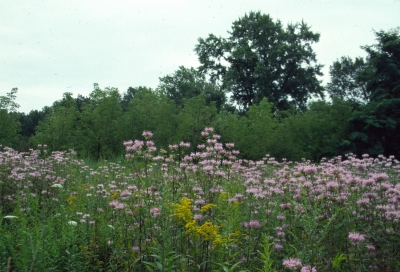
The plants’ desire to spread put me off planting them. Not that they’re an invasive plant in the general sense, but in a well managed garden they do require regular attention.
Bee-balm is a perennial. Many gardeners plant perennial flowers to avoid the bother of having to replant flowers each spring. Hence, perennials are less trouble to grow than annuals, right? Wrong! Bee-balm is a member of that club of perennial flowers (tansy and yarrow are others) whose growth needs to be curbed every year, or at least every couple of years. 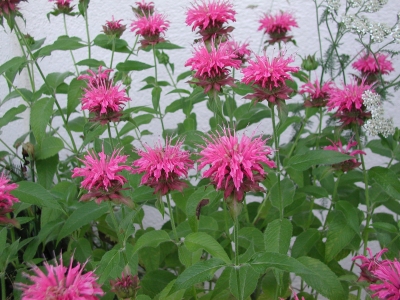 “Unplanted,” you might say. The tool for this is a sharp spade, with which you divide the crown, and also discarding or giving away, for replanting, errant pieces of root and stem.
“Unplanted,” you might say. The tool for this is a sharp spade, with which you divide the crown, and also discarding or giving away, for replanting, errant pieces of root and stem.
I also put off planting bee-balm because I’d seen too many plantings with plants’ leaves dusted with a powdery, white coating from the fungus disease powdery mildew. This disease does little harm to the plants, but doesn’t look very nice. I can just ignore wild plants when severely infected; not so my own infected plants, if they were sadly staring at me every day throughout the growing season, even while not in flower.
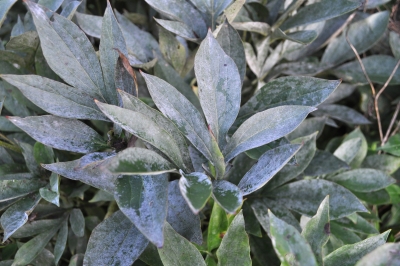
Powdery mildew (on peony)
Bergamots Galore
Whoops! Here I thought I was writing about “bee-balm.” I just looked up something about the plant and find out that the plant that I am writing about planting — the plant I long admired in the wild — is not really bee-balm. I feel as if I have just discovered that an old friend has been living under a pseudonym (although the fault is mine). The wild plant now blooming with pale lavender flowers is really called wild bergamot, botanically Monarda fistulosa.
(Even if you dislike botanical nomenclature, you may be thankful for it here. “Bergamot” of the Old World is a mint species, Mentha aquatic, a completely different plant than wild bergamot. Okay you botanists, so the genus Monarda is also in the mint family. But there is another “bergamot” that is a citrus species, Citrus aurantium spp. Bergamia. This citrus is a type of citron valued for its fine taste and aroma, which goes into making perfume. Had enough? “Bergamot” is also in the name of about fifty different varieties of pear.)
All these unrelated plants, including Monarda species share their aroma due to thymol, an essential oil. That oil has a long, long history of medicinal use in many parts of the world as antiseptics, dewormers, treating wounds, as well as for sleep aids, and for inspiring courage.
Back to Balm
Didn’t we leave bee-balm hanging about a paragraph away? Let’s get back to it. Bee-balm is a wild plant closely related to wild bergamot, and distinguished from it most easily by its scarlet flowers, not only beautiful but also very attractive to hummingbirds.
Bee-balm goes under the botanical name of Monarda didyma, and other common names such as Oswego tea and horsemint. A few garden varieties have been selected, ranging in color from white (‘Snow White’ and ‘Snow Queen’) to dark red (‘Mahogany’).
If you want to impress people with your knowledge of perennial varieties, tell them that you particularly like the bee-balm varieties ‘Cambridge Scarlet’ and ‘Croftway Pink’ — very British-sounding, very beautiful, and very available. (In fact, bee-balm from the New World was transplanted into the gardens of Britain’s King Charles I almost 400 years ago).
The scarlet flowers of bee-balm are just about as striking as those of another wildflower blooming in part shade, cardinal flower (Lobelia cardinalis).
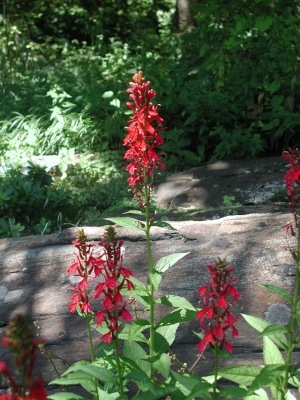
Cardinal flower
But cardinal flower is somewhat exacting in its growth requirements, often dying out after a couple of years — as I have read and experienced in my own garden.
Tamed and Wild
I did eventually plant true bee-balm in my garden, a powdery mildew resistant variety with scarlet flowers. 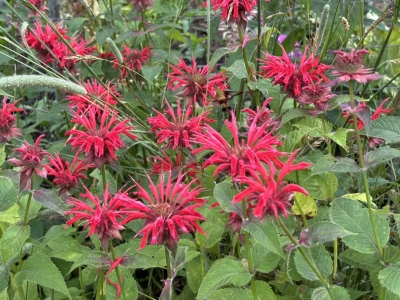 And the meadow that I inherited when I bought the property next door did eventually become home to, in addition to a slew of other colorful beauties, wild bergamot. It moved in of its own accord, liked the conditions there, and large swaths of them have more or less reappeared most years.
And the meadow that I inherited when I bought the property next door did eventually become home to, in addition to a slew of other colorful beauties, wild bergamot. It moved in of its own accord, liked the conditions there, and large swaths of them have more or less reappeared most years.
Bee-balm (and, obviously, wild bergamot) are easy to grow. The wild bergamot increases or decreases each year depending on the previous season’s weather and when I give the meadow its once a year mowing.
As for bee balm, it grows well in any reasonably good soil situated in full sun or partial shade; mine bask in sunlight against a south-facing, stucco wall. These plants also are easy to propagate from seeds and from softwood cuttings. Mine came to me from a friend in the form of crown divisions and rooted runners, the latter anyway needing regular reining in to stop the plants further spread.


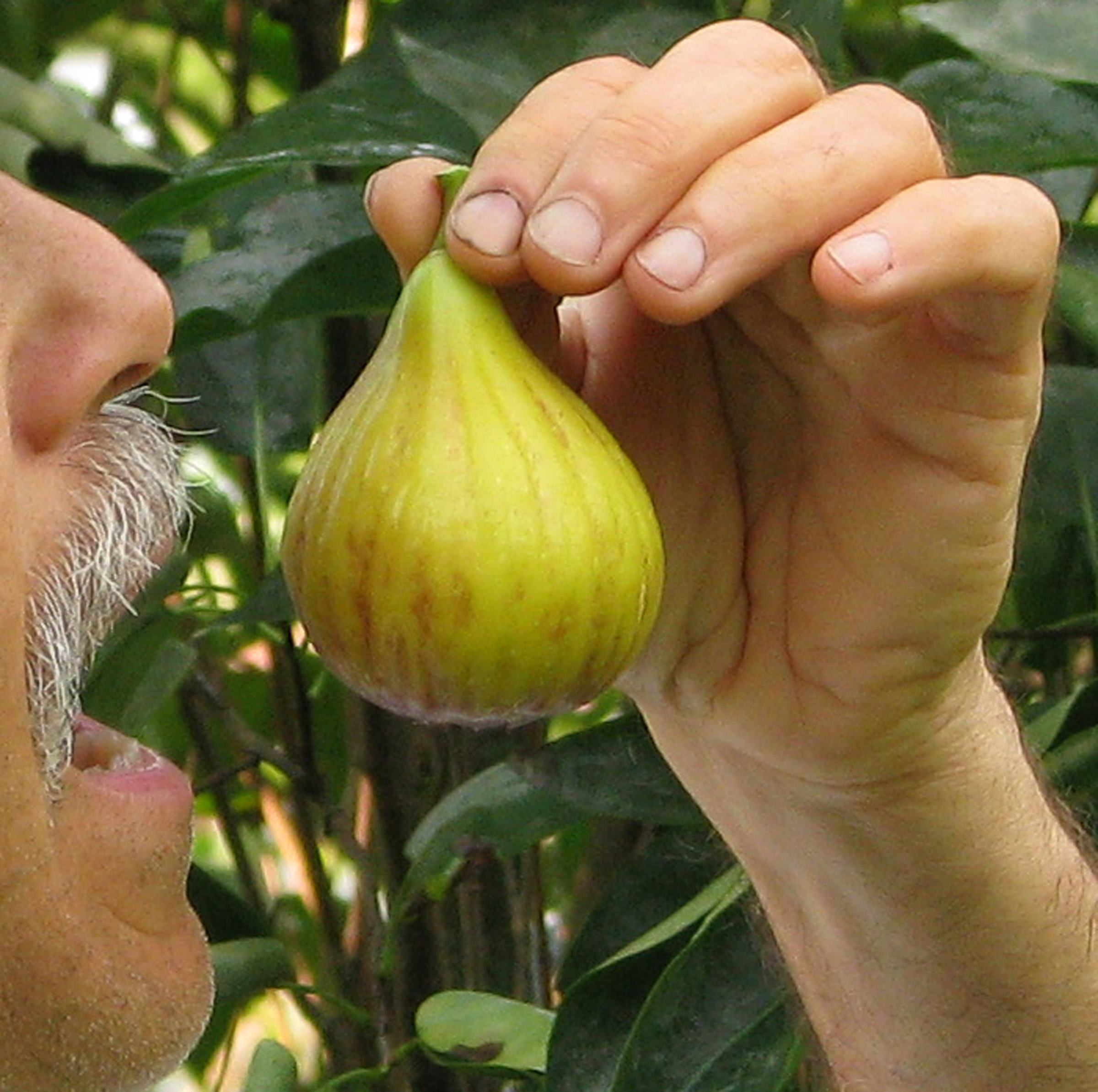
Thanks for a great article!